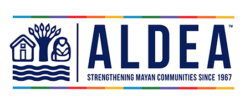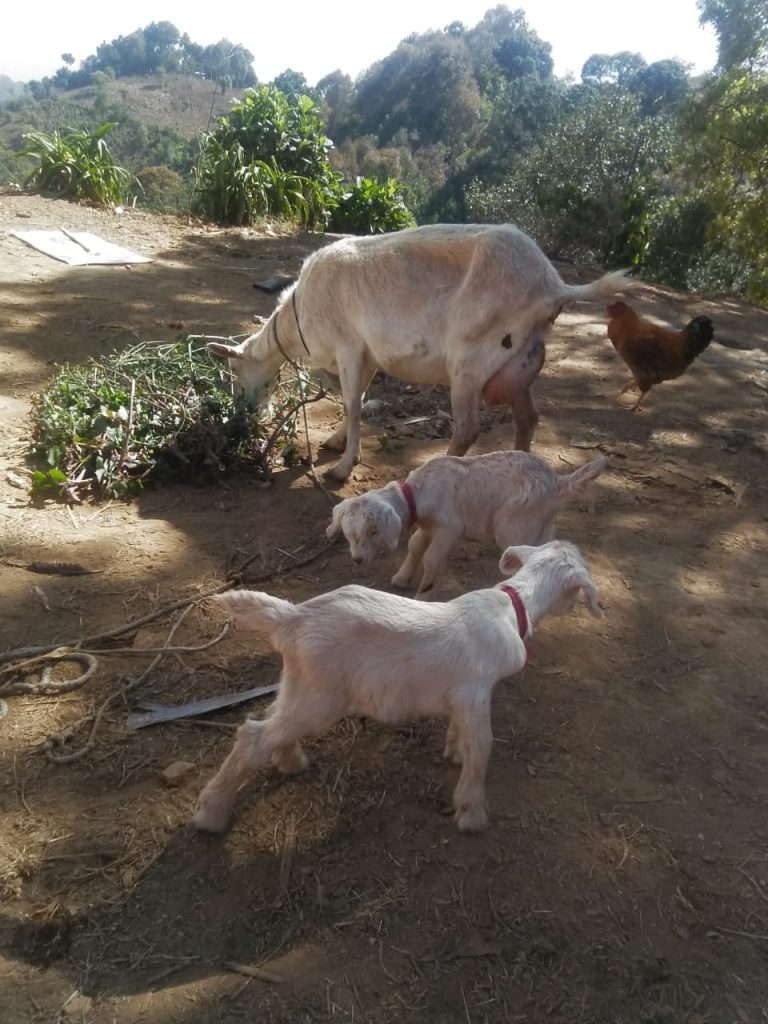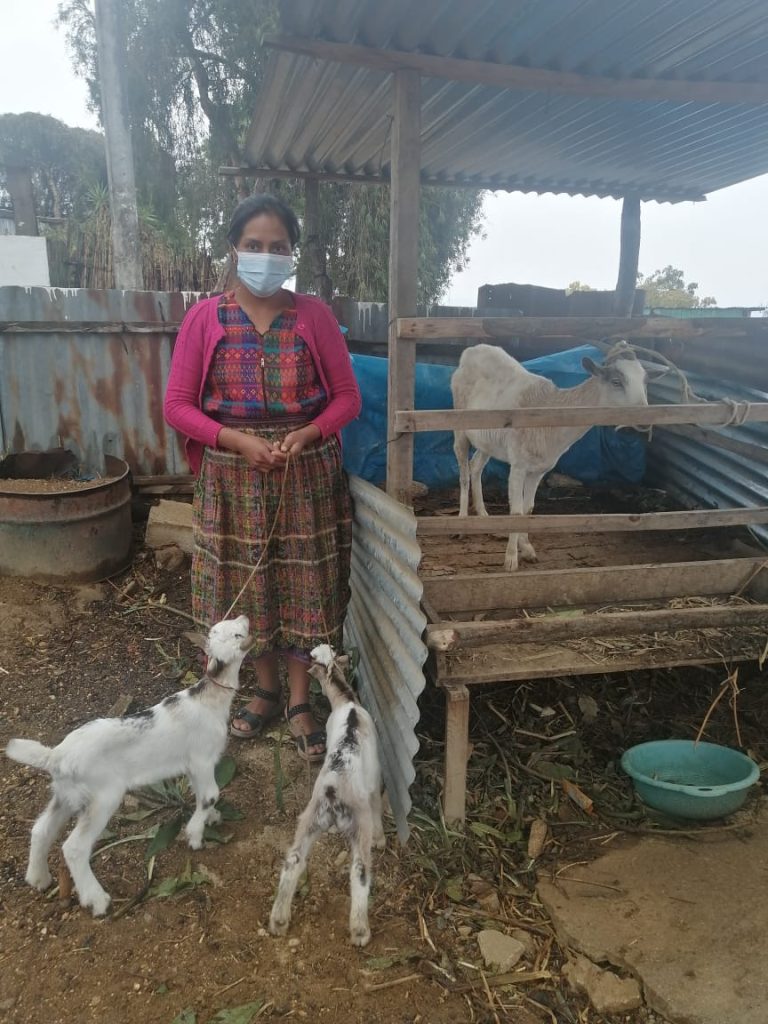The flock continues to grow as more and more goats are born in Xiquín Sanahí. The milk produced by these goats will play an important role in defeating chronic malnutrition in our partner communities. Although nothing should be used as a substitute for a mother’s milk, goat milk is similar in its composition, rich in calcium and proteins, potassium, manganese, phosphorus and vitamins. It is an ideal food source for children above 2 years old (before this age they must receive breast milk). ABPD promotes the consumption of goat milk by families with children above 2 years of age for adequate growth and to distance themselves from the risk of chronic malnutrition. In order to sustain and expand the positive impact these animals can have in partner communities, each family who is provided a goat commits to gift their goat’s first offspring to a neighboring household without a goat. In this way, community members work together to share resources and support each other in strengthening nutrition and food security for all.
The benefits of goat milk mentioned above are just one of the many advantages this animal has to offer. The Guatemalan highlands consist of largely rocky and mountainous terrain, goats can adapt to this landscape much quicker and easier than cows, require less food, have a more diverse diet and consume significantly less water. To top it off, goat milk is apt for many people who are lactose intolerant or have intestinal problems as they won’t suffer negative effects from goat’s milk as they would from cow’s milk. Added together this makes goats a low-maintenance, high-yield addition to communities’ tool kits for fighting malnutrition.


